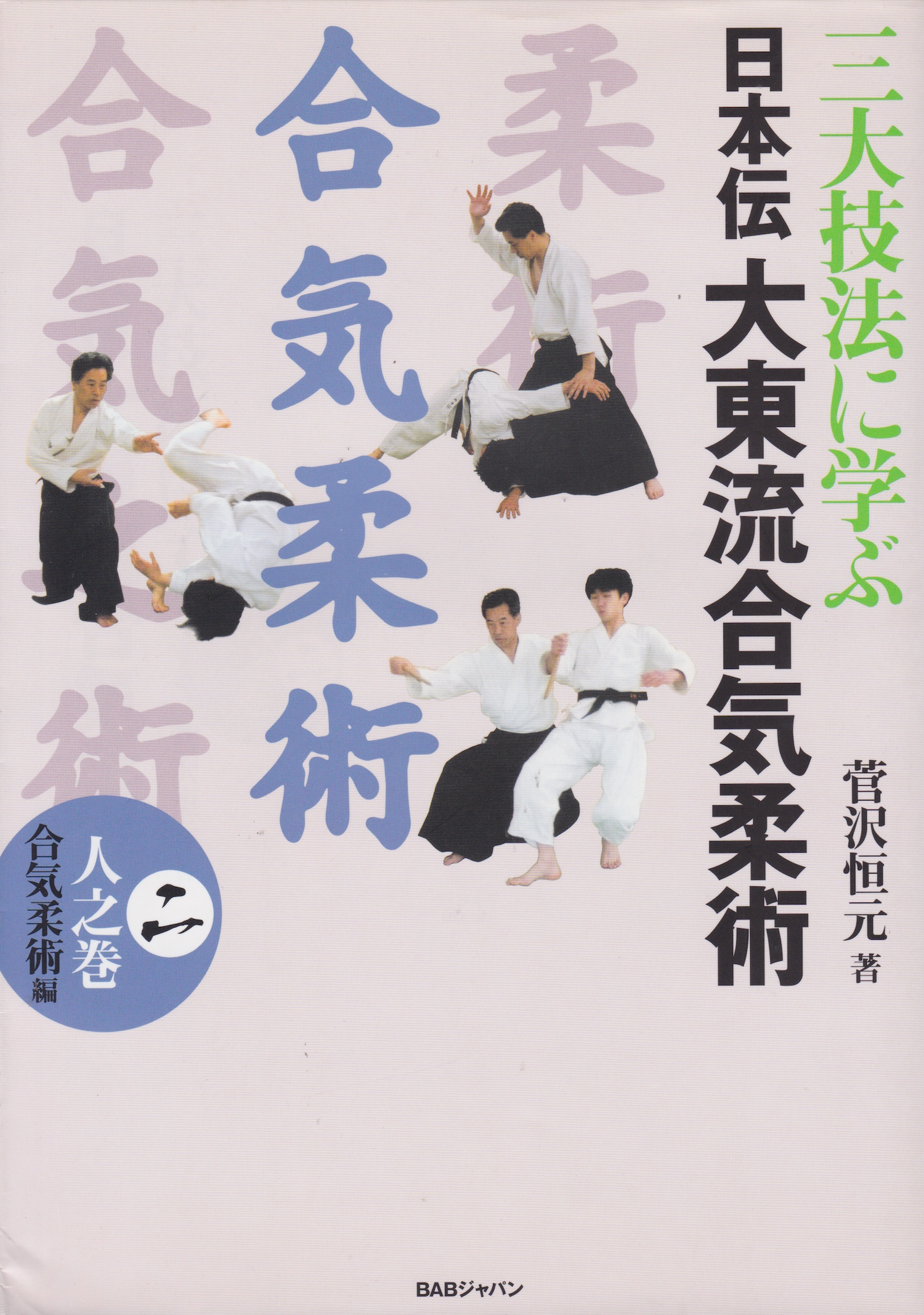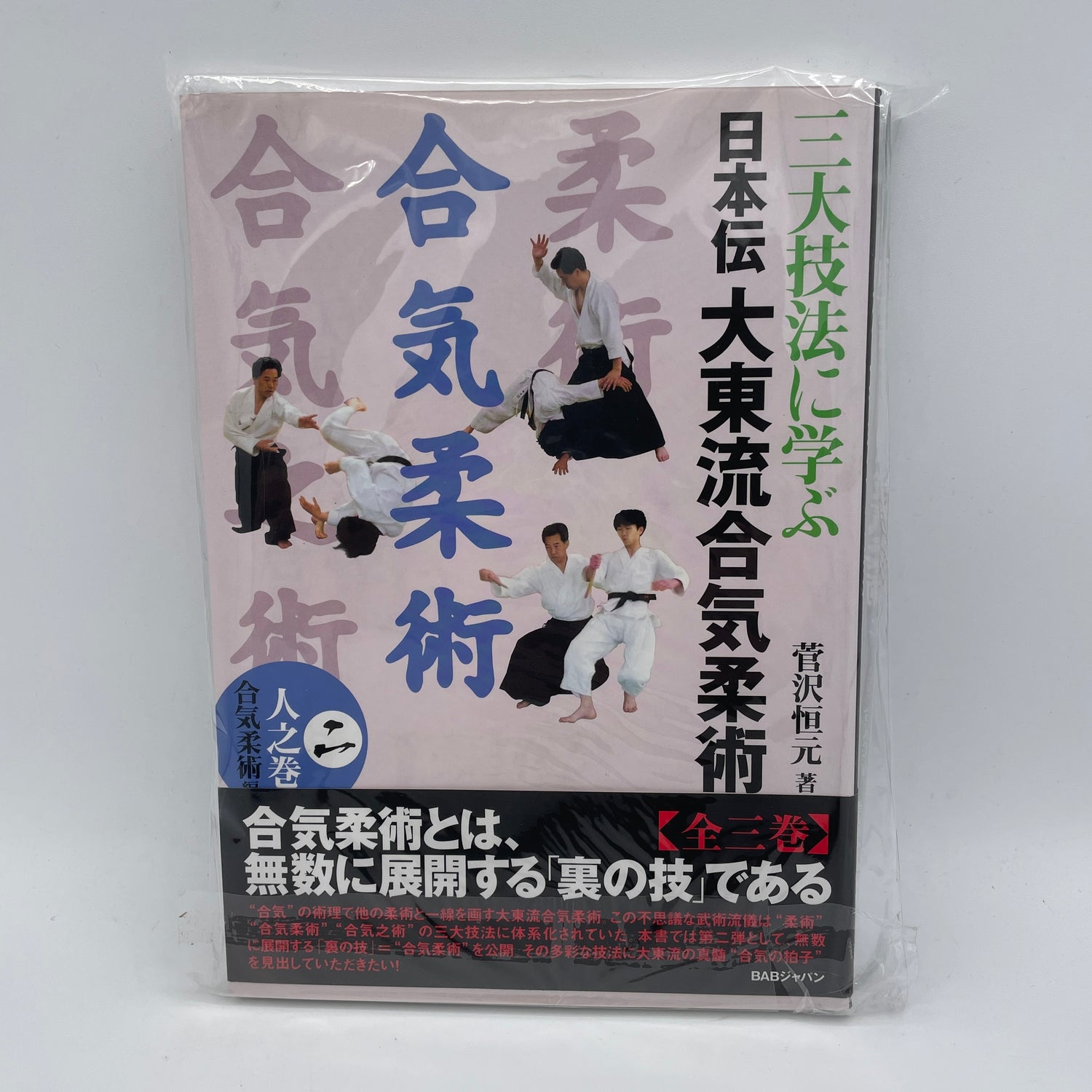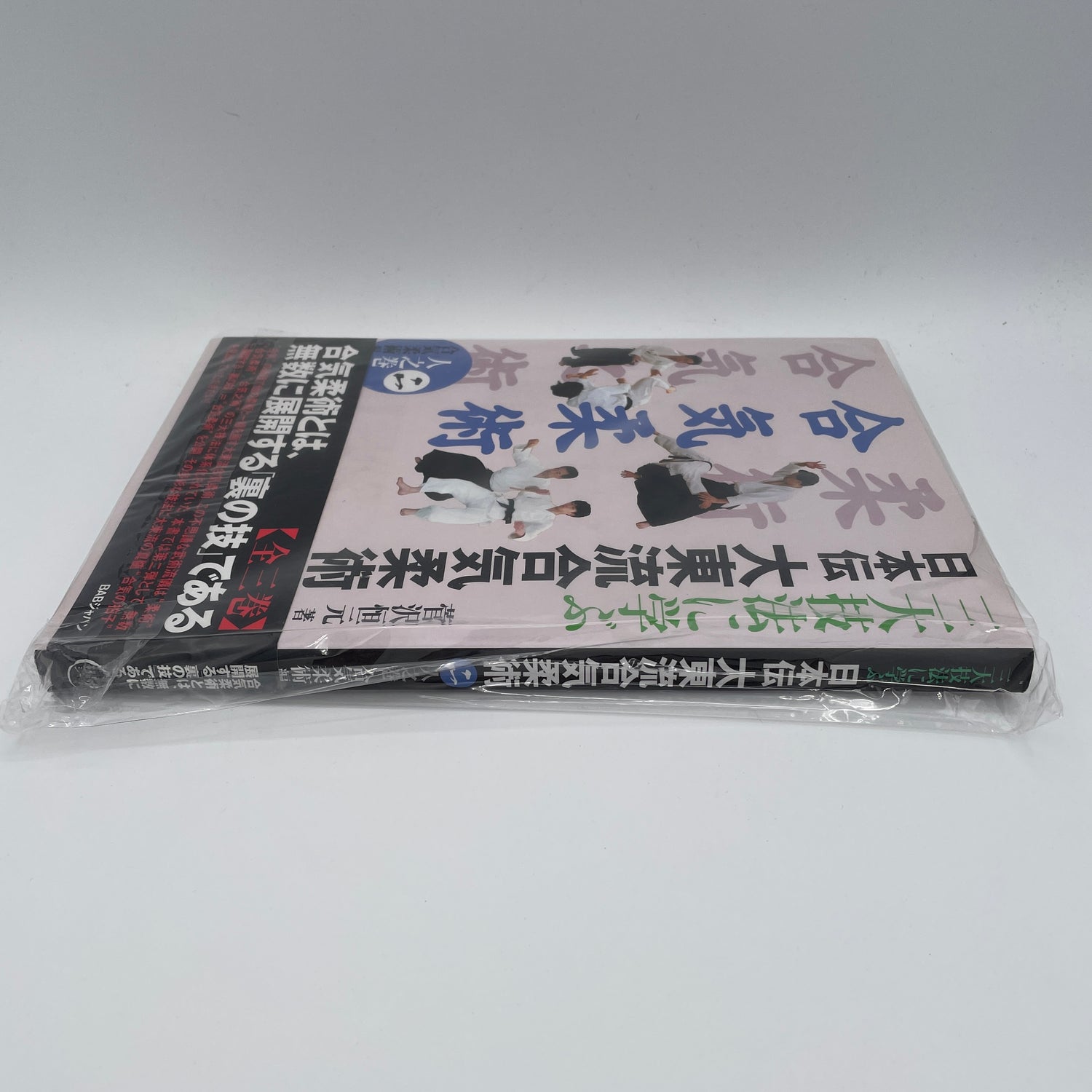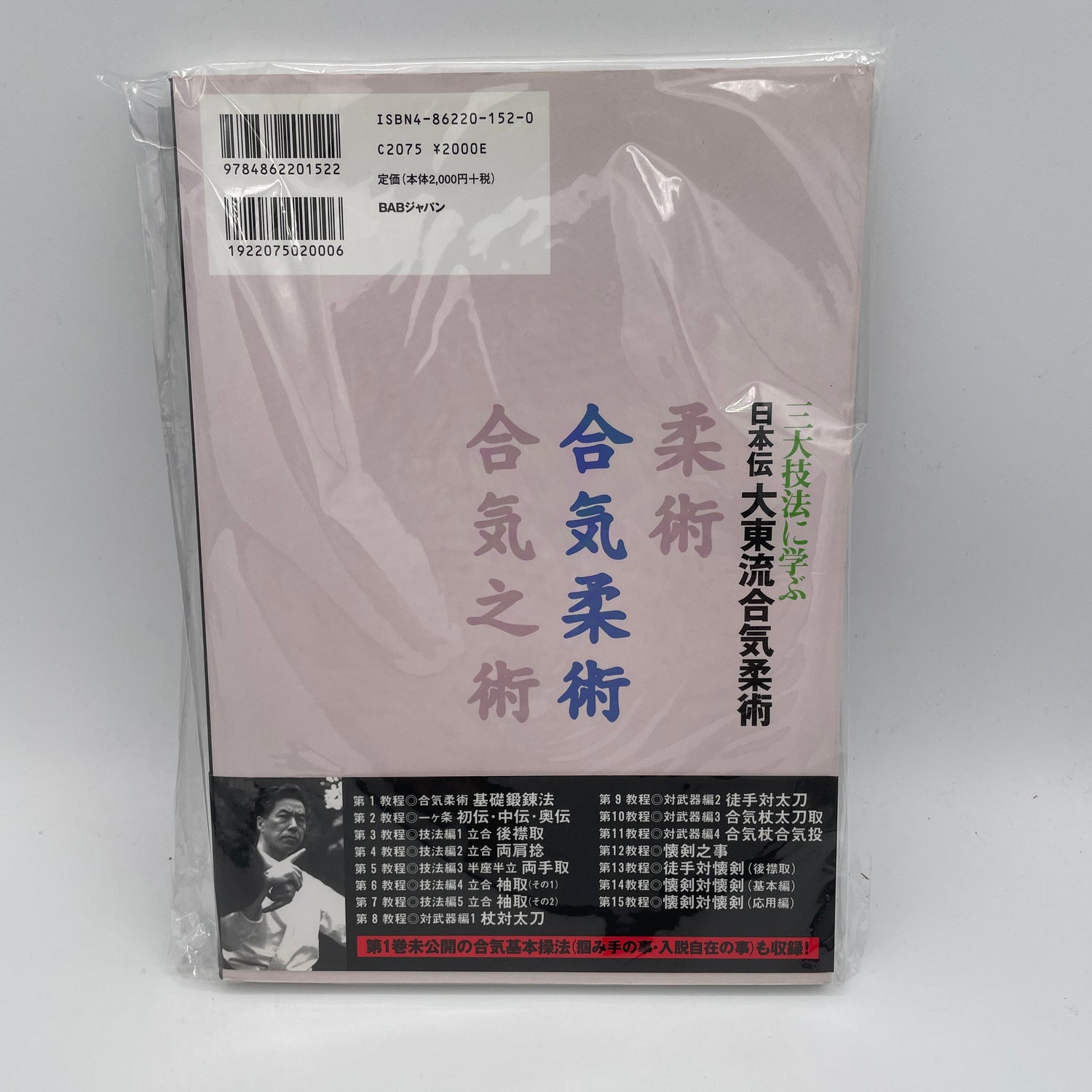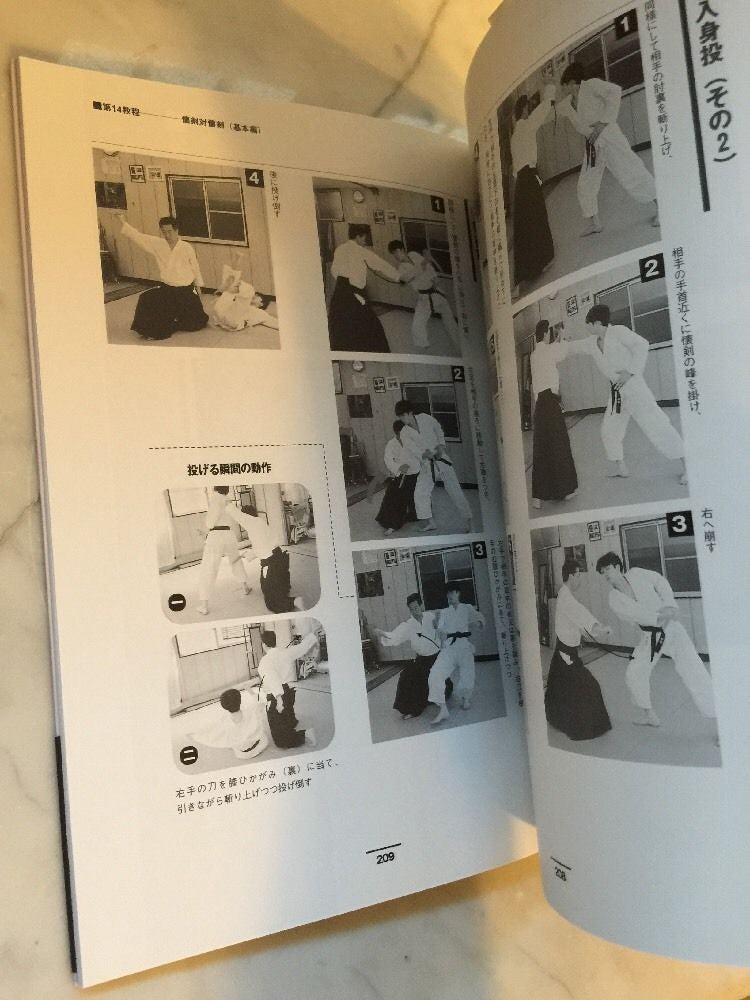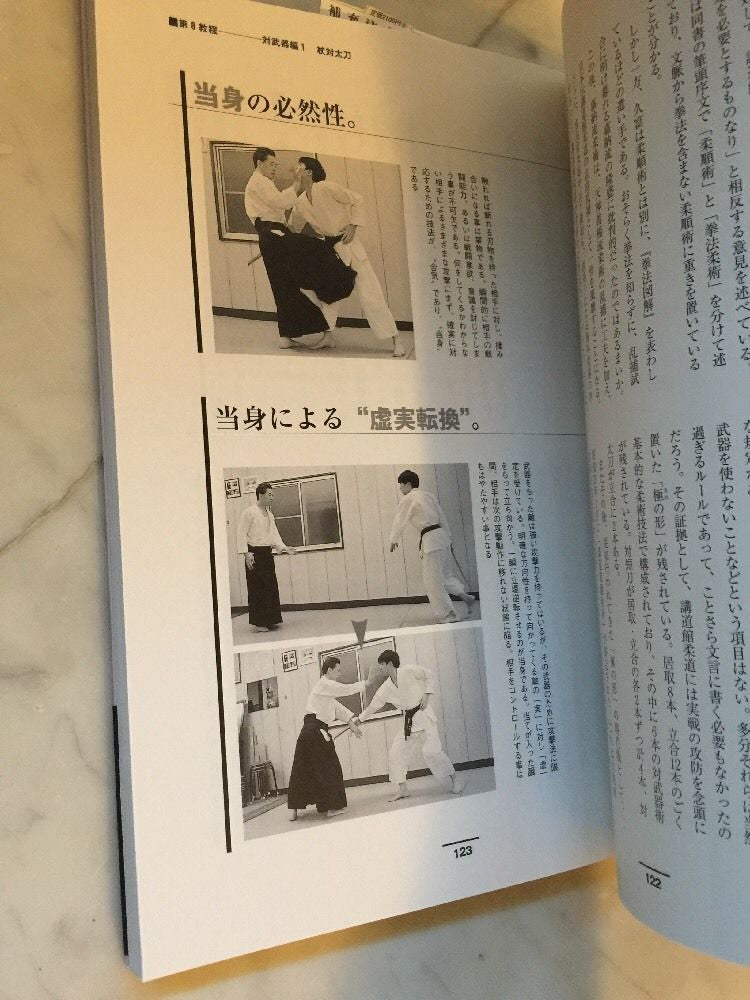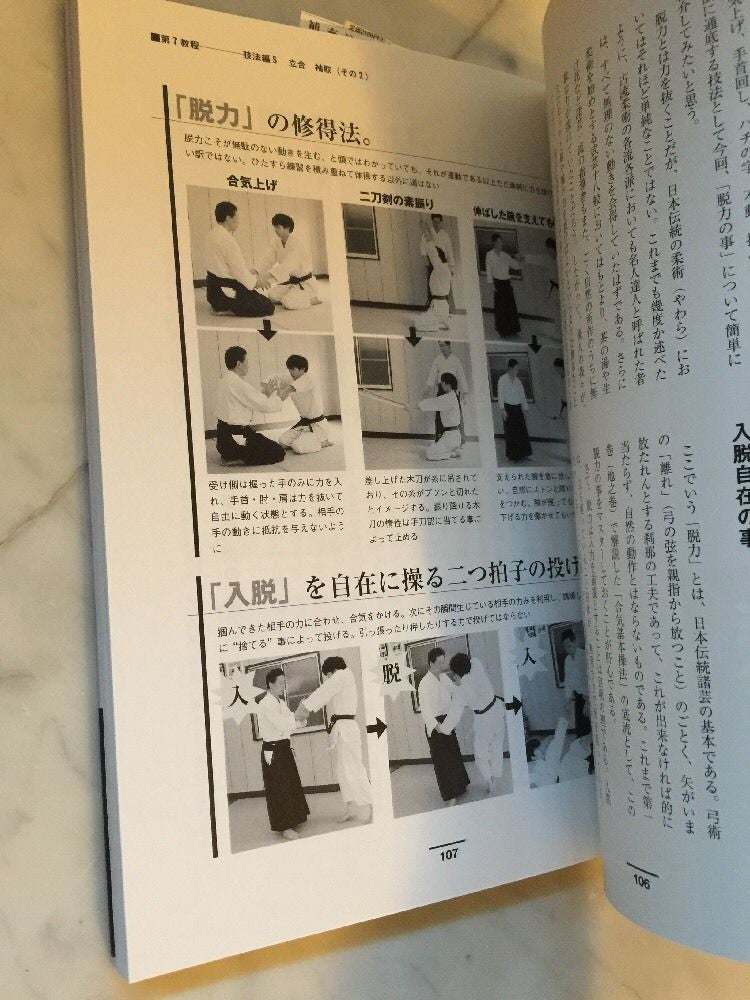Nihonden Daito Ryu Aikijujutsu Book 2: Aikijujutsu By Kogen Sugasawa (Preowned)
Aiki-jujutsu is distinguished from other jujutsu styles by its principle of "ura-waza" (hidden techniques) of "aiki". This mysterious martial art system was systematized into three major technical methods: "jujutsu," "aiki-jujutsu," and "aiki-no-jutsu." This book, as the second volume, reveals the "ura-waza" = "aiki-jujutsu" techniques that can develop infinitely. Readers will discover the essence of Daito-ryu in these diverse techniques through "aiki no hyoshi" (timing of aiki).
CONTENTS:
Chapter 1: Basic Training Methods of Aiki-jujutsu
- Sui Nishie footwork
- Basic training methods of aiki-jujutsu
- Training methods with wooden sword and paired techniques
- Basic movements
- First through third conditions (omote & ura) movements
- Fourth condition movements
- Entering movements
- Kotegaeshi
- Significance of knee walking
Chapter 2: First Condition - Basic, Intermediate, and Advanced Teachings
- About Saigo Tanomo
- "Aiki" and "Kiai" in Aiki-jujutsu
- First Condition Basic, Intermediate, and Advanced teachings (omote & ura forms)
Chapter 3: Technical Section 1 - Standing Rear Collar Grab
- Transmission of Sokaku's teachings
- About Japanese transmitted Aiki-jujutsu
- From basic to flowing form
- Jujutsu standing collar grab
- Aiki-jujutsu rear collar grab
Chapter 4: Technical Section 2 - Standing Double Shoulder Twist
- The five-condition system
- Attack patterns in jujutsu
- Rear attack forms
- Meaning of rear attacks
- From jujutsu to aiki-jujutsu
- Jujutsu double shoulder twist
- Aiki-jujutsu rear double shoulder grab
Chapter 5: Technical Section 3 - Half-Seated Double Hand Grab
- Half-seated techniques
- Interpretation and practice of knee walking
- Basic knee walking practice
- Two-sword practice and knee walking
- Training methods for knee walking
- Aiki method against double hand grab
- About grabbing hands (against double hand grab)
- Jujutsu half-seated double hand grab
- Aiki-jujutsu double hand grab
Chapter 6: Technical Section 4 - Standing Sleeve Grab (Part 1)
- About Japanese transmission
- Japanese transmission and yoga
- About grabbing hands (against sleeve grab)
- Jujutsu standing reverse cut
- Aiki-jujutsu sleeve grab applications and variations (Part 1)
Chapter 7: Technical Section 5 - Standing Sleeve Grab (Part 2)
- About relaxation
- About entering and withdrawing freely
- Methods for mastering relaxation
- Entering and withdrawing with aiki two swords
- Basic aiki operations and free entering/withdrawing
- Timing of sleeve and collar grabs (principles of grabbing hands)
- Aiki-jujutsu sleeve grab applications and variations (Part 2)
Chapter 8: Weapons Section 1 - Staff vs. Sword
- Form or free practice?
- Vital point striking methods against weapons
- Special transmission "Aiki Jo" basic paired forms
- Process leading to paired forms
- Empty-hand paired movements (striking practice)
- Basic paired forms (staff vs. sword)
Chapter 9: Weapons Section 2 - Empty Hand vs. Sword
- Combat effectiveness of "kata"
- Atemi in Kodokan Judo
- Definition of "yawara"
- Paired movements (sword vs. sword)
- Basic movements (empty hand vs. sword)
- Paired forms with variations Part 1 (empty hand vs. sword)
Chapter 10: Weapons Section 3 - Aiki Staff Sword Taking
- Jigoro Kano's great lecture
- Explanation of judo combat methods
- The future of judo
- Guide to Aiki staff
- Paired forms with variations Part 2 (empty hand vs. sword)
- About grabbing hands
Chapter 11: Weapons Section 4 - Aiki Staff Aiki Throws
- The pilgrim's staff at Mount Yarigatake summit
- The message of "Self-Defense Staff Way"
- From external to internal breathing
- About "A-un no kokyu" (harmonious breathing)
- Paired forms with variations Part 3 (empty hand vs. sword and short sword)
Chapter 12: About the Pocket Sword
- About the pocket sword
Length: 228 pages
Language: Japanese
Publication date: 2006
MBSUG2
Impossible de charger la disponibilité du service de retrait


